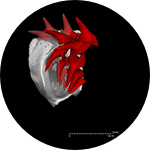About This Project
The chimaeras (ghost sharks and spookfish) are a group of often deep sea fishes related to the sharks and rays. Unlike sharks, chimaeras have large, continuously growing tooth plates. These tooth plates have a very different structure to the teeth of sharks, or indeed any other fish. Within the teeth are sheets, rods and 'beads' of hard material that forms the cutting and biting surfaces. We shall be investigating the structure and development of these teeth and relating it to teeth of sharks.
Ask the Scientists
Join The DiscussionWhat is the context of this research?
In sharks and rays, teeth form within the mouth interior and move towards the jaw edge to replace older teeth. ( http://dx.doi.org/10.1371/journal.pone.0122553) Chimaeras are most closely related to sharks, but have been distinct from them for 400 million years. Early chimaera relatives had a shark-like tooth replacement, but with a unique tooth structure (http://biostor.org/reference/68154). Modern chimaeras have 3 pairs of continuously growing tooth plates. These have a complex structure of more porous dentine within which there are rods, sheets and spheres of very dense and hard material. Whilst there are few shallow water chimaeras, they often dominate deep oceans and different species feed on a range of hard and soft foods, indicating the usefulness of this shortage dentition.
What is the significance of this project?
The development of teeth is seen as fundamental to the success of the vertebrates, but there are two very different modes of tooth formation. The unique dentition of the chimaeras contrasts with the situation in bone-bearing vertebrates, where teeth are embedded in a jaw bone, and sharks. Chimaeras therefore possess one of the three different fundamental plans of tooth development and structure in vertebrates. As a result, a understanding of the tooth development in chimaeras is critical to a complete understanding of the origins of teeth and the evolution of tissues and structures associated with tooth development. Study of how the dental lamina generates these different tissues will allow a greater insight into the origins of teeth and whether teeth appeared on one or multiple occasions.
What are the goals of the project?
The project is a continuation of work on the teeth of sharks and rays, and will expand our knowledge of tooth formation within the cartilaginous fish. The study will investigate the dentitions of a number of species of deep-water chimaeras from deep waters off Scotland, which will be captured by scientific trawls in September 2016, as well as some specimens of several species already in collections. Tooth plates will be studied primarily by microscopy of polished thin sections which will yield microstructural details. In addition, some CT scan time will be available at the NHM allowing investigation of the 3D form of the different tissues. This data will be combined with ongoing research of both modern and fossil chimaeras to create a model of tooth plate development and evolution.
Budget
The budget will allow specimens to be collected, fixed and prepared, and microscope slides for fine study made. The research vessel Scotia will catch a number of chimaeroid species during deep water trawls and specimens will be transported to London for study. Hydrogen peroxide, formalin and alcohol will be used for wet and dry fixing and preparation of specimens.
Specimens of species lacking in NHM collections will be donated at this point.
15 polished microscope sections will be made through tooth plates of adults and juveniles of the chimaeroids Chimaera, Harriotta and Callorhynchus (already in collection). These will be studied using microscopes at Birkbeck and the NHM.
Endorsed by
Meet the Team
Affiliates
Affiliates
Charlie Underwood
I graduated with a degree in Geology from the University of Exeter in 1989, and a PhD on fossil preservation from the University of Bristol in 1993. Since 2000 I have been at Birkbeck College, London where I am now a Senior Lecturer in Geology. I have published extensively on shark and ray evolution, as well as their palaeoecology and preservation, in addition to other, largely field related, subject areas. Over the last few years I have been conducting increasing amounts of research on modern sharks and rays, and in doing so have collaborated extensively with workers at the Natural History Museum, London and elsewhere. This has resulted in a number of high profile papers on the development of teeth and other tooth-like structures (such as rostral 'teeth' of sawfish).
I aim to incorporate my research with my teaching, which is largely to part time evening students within a college that encourages widening participation. I also conduct outreach wherever possible; during spring 2016 I have done several days of outreach at local schools as well as at the Lyme Regis Fossil Festival.
Clive Trueman
Dr Clive Trueman is Associate Professor in Marine Ecology within Ocean and Earth Science, National Oceanography Centre Southampton at the University of Southampton.
BSc Geology Bristol, (1993) PhD Geochemistry Bristol (1997) Appointed Lecturer at Southampton (2006)
Project Backers
- 20Backers
- 102%Funded
- $605Total Donations
- $30.25Average Donation




